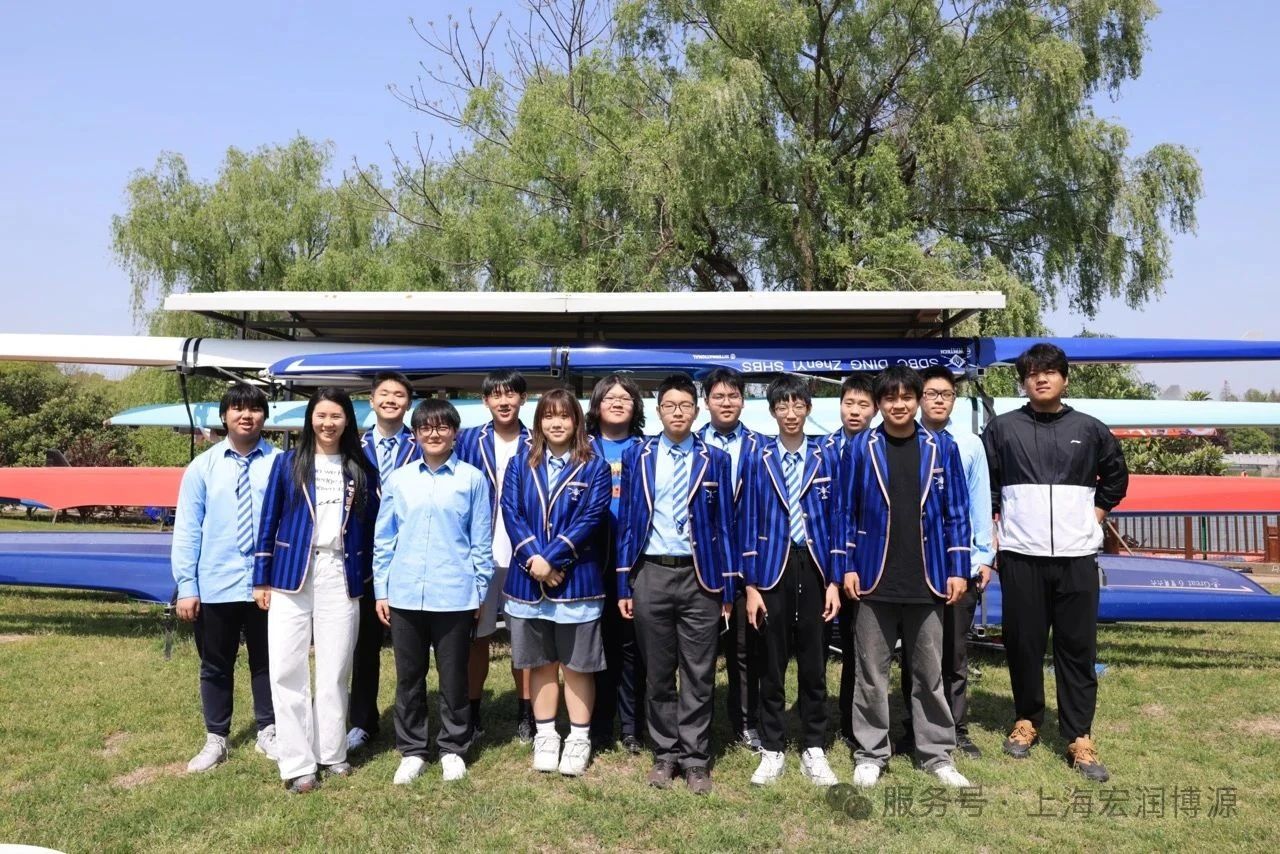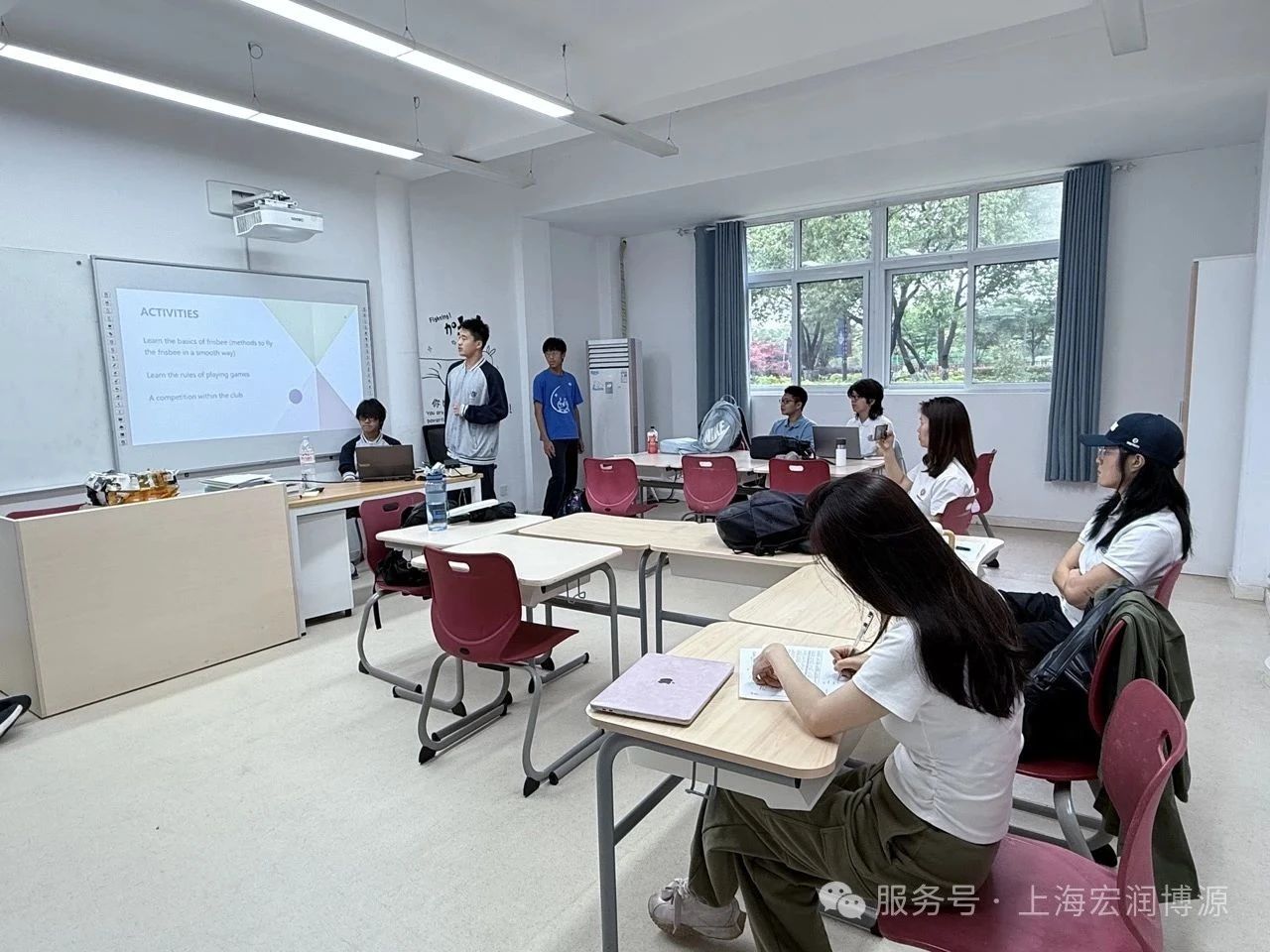-

 Hongrun Boyuan High School Rowing Academy | Shaping Youth Rowing Teams and Future Leaders2025-06-20
Hongrun Boyuan High School Rowing Academy | Shaping Youth Rowing Teams and Future Leaders2025-06-20 -

 Hongrun Boyuan High School Event | A Flourishing of Talents and Vibrant Energy: 2024–2025 Second Semester Club Summary Report2025-06-18
Hongrun Boyuan High School Event | A Flourishing of Talents and Vibrant Energy: 2024–2025 Second Semester Club Summary Report2025-06-18 -

 Commencement|Speech by Ms. Yuan Yiting, Parent Representative of the Graduates2025-06-06
Commencement|Speech by Ms. Yuan Yiting, Parent Representative of the Graduates2025-06-06
- 2024-05-25
- Views:1191
Plasma Ring
The plasma ring is a phenomenon of ring-shaped gas discharge, an innovative piece that combines technology and art, which is why we decided to feature it in our science fair project.
However, it wasn't as simple as it appeared. We were immediately bogged down by the complex principles involved, which were areas we had never explored before. Even with the schematic diagrams available on the open-source platform, it was still challenging to quickly understand and master all the electromagnetism knowledge related to this project. After days of confusion, we decided to prioritize making the product, but this step was also fraught with difficulties.
We first joined a group organized by the original project team, where we learned about the PCB diagrams and printing methods. We rushed to print and purchase materials, only to find out that the PCB was not the final version, and we were unsure if it matched the corresponding schematic. Eventually, we consulted the project leader, obtained the latest circuit board and material package, and began soldering the circuit.
Everyone was very careful during the soldering process, protecting both ourselves and the electronic components. We successfully completed the soldering work and wound the coil. We then conducted the first test, which was relatively successful, though there were still some issues to resolve—the current plasma ball could only produce a glow but not form a ring. We sought help from knowledgeable group members, but to truly understand the problem, we needed to resolve it on-site. So, we sent the circuit to the open-source project's leader, hoping he could provide a solution.
When he returned the circuit, we found that the MOSFET model was incorrect. After resoldering, it finally formed a ring. However, new problems arose. The current plasma ball only formed a ring occasionally. After repeated inquiries with the seller, we all agreed it was an issue with the ball. We prepared two contingency plans: purchasing a new krypton gas ball and trying a new coil. Ultimately, we successfully achieved our initial vision.
In this science fair, we all learned a lot, not just about time management, but also about teamwork and leadership skills, which benefited me greatly. I look forward to the next science fair and the wonderful experiences it will bring.
Next is the principle analysis of the project:
When xenon gas is exposed to a strong electric field, collisions between molecules cause the outer electrons to detach from their orbits, becoming ionized and forming plasma composed of charged particles. The ring-shaped electric field stabilizes it into a ring structure, and the collisions of charged particles produce glow discharge. When gas molecules' electrons are excited to higher energy levels, they eventually return to their original lower energy levels, releasing photons corresponding to the energy difference, making the plasma ring visible.
Application of Biotechnology: DNA Extraction, Enzyme Digestion, PCR, and Gel Electrophoresis
生物
DNA提取
This experiment aimed to extract DNA from the school's cats and use gel electrophoresis to determine their kinship. We first collected oral cells from the cats and added various lysis solutions and enzymes to degrade all molecules except DNA. We then used adsorption columns to collect the DNA sample solution. Next, we employed PCR amplification to replicate the DNA samples, making the DNA bands more visible in gel electrophoresis. Finally, we added different restriction endonucleases to the post-PCR samples. These enzymes recognize specific DNA sequences and cut them into varying lengths. By running gel electrophoresis again, we separated the DNA fragments by length, allowing us to see different DNA band patterns and compare the kinship of the cats (cats with closer kinship have higher DNA band overlap).
VEX Robotics Competition
The VEX Robotics Competition has different rules and objectives each season. This season, the theme is High Stakes. The main objectives are to place rings on stakes in the field and climb poles, each with different point values, with the total score determining the winner.
Our robot consists of three main parts: the chassis, the mechanical arm, and the grabber. According to the rules, the robot is allowed a total of 8 motors.
Chassis: 6 motors are allocated to the chassis, with 3 motors on each side. They drive three wheels on each side using a gear transmission system, achieving a speed of approximately 332 RPM.
Mechanical arm: The arm is used to control the height of the grabber and climb poles. It employs a large gear driving a small gear to provide enough torque to lift the entire robot during the climb, thus achieving both the ring placement and pole climbing objectives.
Grabber: Perpendicular to the mechanical arm, the grabber has two flexible plastic flaps at its end. When the mechanical arm moves down, the flaps deform to allow the ring to pass through. When lifted, the flaps return to their original shape to hold the ring in place (grabbing).
Additionally, we added a crank linkage to convert the circular motion into a linear downward motion, applying downward pressure on the ring from above. This again causes the flaps to deform, releasing the ring (placing).
文 | 科学展项目负责同学
审核 | Flora
翻译 | ChatGPT
排版 | Jang
配图 | Max Guo(G12)








